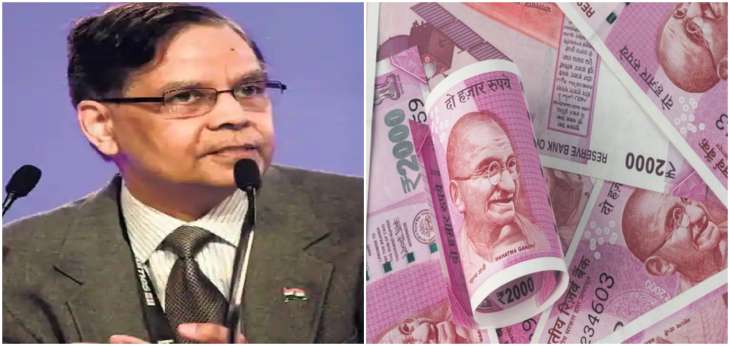‘We’ll not see any perceptible effect on economy’: Ex-NITI Aayog Vice Chairman on 2,000 notes withdrawal

2,000 notes withdrawal: A day after the withdrawal of Rs 2,000 currency notes from circulation, former NITI Aayog Vice Chairman Arvind Panagariya said the RBI’s decision will not have any ‘perceptible effect’ on the economy as any such notes returned will be replaced by either equivalent cash in lower denomination notes or a deposit. He further said the likely motive behind this move is to make the movement of illicit money more difficult.
“We will not see any perceptible effect on the economy. Any currency in Rs 2,000 notes returned will be replaced by either equivalent cash in lower denomination notes or a deposit. So money supply will not be impacted,” he told the news agency PTI. Panagariya noted that Rs 2,000 currency notes represent only 10.8 per cent of the cash currently in the hands of the public and probably most of it is being used for illicit transactions.
ALSO READ: RBI to withdraw Rs 2,000 currency note from circulation but it will continue to be legal tender
RBI announces withdrawal of Rs 2,000 currency notes
The Reserve Bank of India on Friday announced the withdrawal of Rs 2,000 currency notes from circulation, and existing notes in circulation can either be deposited in bank accounts or exchanged by September 30. The bank notes in Rs 2,000 denomination will continue to be a legal tender, the RBI had said in a statement.
Asked whether the public will face inconvenience due to this move, the eminent economist said many citizens probably have no Rs 2,000 notes since few transactions take place in those notes. ” For those who do, inconvenience will not be beyond an extra trip to the bank. Even that can be avoided by exchanging Rs 2,000 notes when visiting the bank for some other transaction,” he said.
Asked if there is a need for Rs 1,000 currency notes, Panagariya said,”As of now, I do not see a need to issue Rs 1,000 notes as citizens have become used to transact in notes of Rs 500 or lower denomination.”
What former NITI Aayog Vice Chairman said?
Explaining further, he pointed out that per capita income in the US in 2021 was USD 70,000 and its highest denomination note is USD 100. This gives ratio of per capita income to the highest denomination note at 700. In India, per capita income in 2021 was approximately Rs. 1,70,000.
“For the same ratio of per capita income to the highest denomination note as in the US, our highest denomination note would have to be Rs 243. So, Rs 500 note as the highest denomination note would seem to be about right for us, given that we are still more of a cash economy than the US,” he said.
The RBI started printing Rs 2,000 notes in November 2016 after Prime Minister Narendra Modi scrapped high-value Rs 1,000 and Rs 500 notes overnight. He opined that one lesson of November 2016 demonetization was that tracing black money is incredibly difficult. “The most you can do is to make future illicit transactions more difficult by eliminating high denomination notes,” he said.
(With PTI inputs)
Latest Business News
For all the latest Business News Click Here
For the latest news and updates, follow us on Google News.

